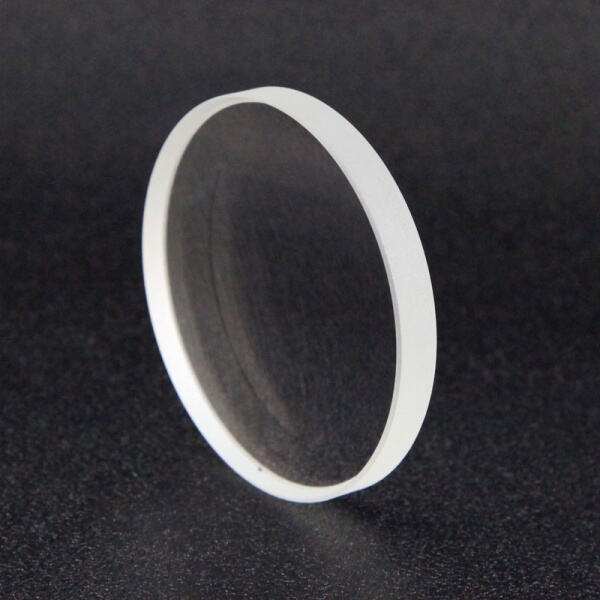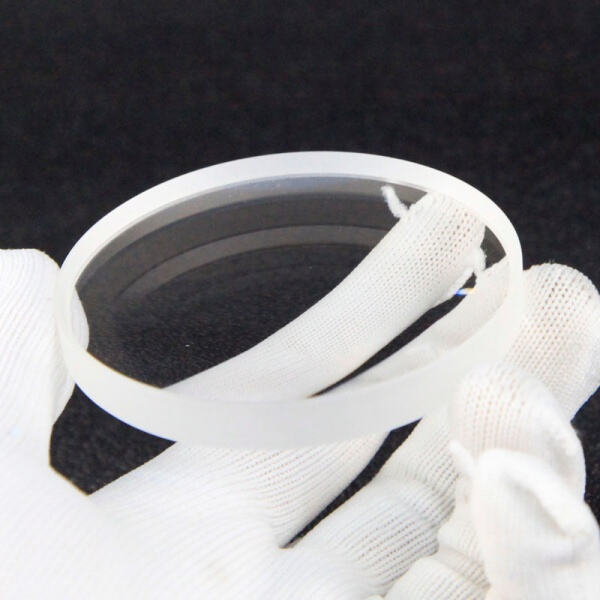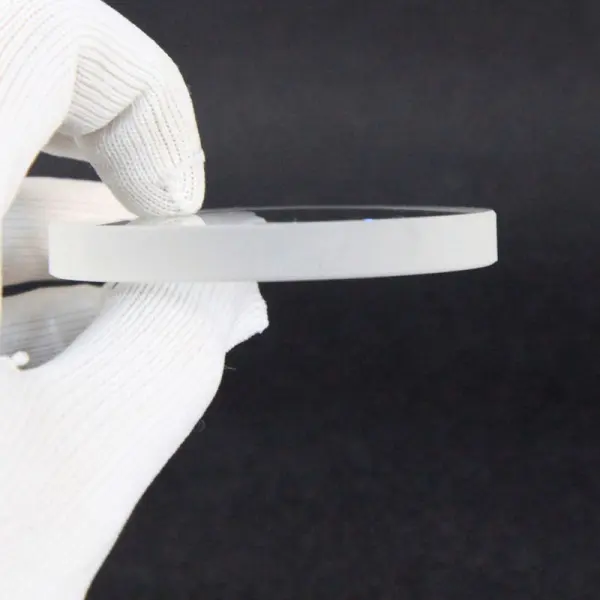
-
+86-156 60188203
[email protected] - Dazhai, Nanyang City, Henan Province China
- จันทร์ - เสาร์ 8.00 - 18.00 อาทิตย์หยุด

เกี่ยวกับเรา NOAIDA รู้สึกตื่นเต้นมากที่ได้เรียกความสนใจของคุณไปที่รายการเลนส์แบบซูเปอร์และ Bi concave (เลนส์) !! เลนส์คือกระจกหรือสื่อโปร่งที่สามารถหักเหแสงได้ การเปลี่ยนทิศทางนี้เรียกว่าการหักเหแสง เลนส์ Bi concave (หรือที่เรียกว่าเลนส์ลบ) มีความน่าสนใจเพราะหนาที่ขอบและบางตรงกลาง หากดูตัวอย่างของเลนส์ Bi concave คุณจะเห็นว่ามันมีโครงสร้างคล้ายกับด้านในของชาม และเนื่องจากทรงที่พิเศษนี้ เลนส์ชนิดนี้ทำให้แสงเกิดปรากฏการณ์ที่น่าสนใจ
กล้องจุลทรรศน์ ซึ่งเป็นหนึ่งในแอปพลิเคชันที่น่าทึ่งที่สุดของเลนส์เว้าสองด้าน กล้องจุลทรรศน์เป็นเครื่องมือที่เราใช้เพื่อดูสิ่งต่างๆ ที่เล็กเกินไปสำหรับการมองเห็นด้วยตาเปล่า เช่น เซลล์ขนาดเล็กที่เป็นองค์ประกอบของชีวิต เพื่อตรวจสอบสิ่งเหล่านี้ นักวิทยาศาสตร์ใช้เลนส์เว้าสองด้านเป็นกล้องจุลทรรศน์ เลนส์เหล่านี้ใช้เพื่อขยายวัตถุขนาดเล็ก เนื่องจากแสงถูกกระจายออกโดยเลนส์เว้าสองด้าน เราจึงสามารถมองเห็นส่วนที่กว้างขึ้นของวัตถุที่เรากำลังสังเกต การมุมมองที่กว้างขึ้นทำให้การค้นพบสิ่งเล็กๆ ที่เรามิฉะนั้นจะไม่สามารถมองเห็นได้ง่ายขึ้น

เลนส์เว้าทั้งสองด้านมีการใช้งานที่ยอดเยี่ยมอีกอย่างในเลนส์คอนแทค เลนส์คอนแทคเป็นเลนส์ขนาดเล็กและบางที่วางอยู่บนลูกตาของคุณ พวกมันช่วยให้ผู้ที่มีปัญหาทางสายตามองเห็นได้อย่างถูกต้อง เลนส์คอนแทคเว้าทั้งสองด้าน — ใช้เพื่อแก้ไขปัญหาที่อาจเกิดขึ้นเนื่องจากรูปร่างของดวงตา เช่น คุณอาจสายตาสั้นหากส่วนหน้าของดวงตามีความโค้งมากเกินไป ซึ่งหมายความว่าคุณมองเห็นสิ่งที่อยู่ใกล้ได้ชัดเจน แต่สิ่งที่อยู่ไกลจะดูเบลอ เพราะแสงที่เข้าสู่ดวงตาของคุณไม่สามารถรวมตัวกันได้ดี และเลนส์คอนแทคเว้าทั้งสองด้านสามารถแก้ไขปัญหานี้ได้ เนื่องจากช่วยให้แสงเหล่านั้นโค้งในลักษณะพิเศษ ทำให้คุณสามารถโฟกัสได้อย่างง่ายดายแม้ว่าสิ่งนั้นจะอยู่ห่างออกไป千里

การใช้เลนส์เว้าทั้งสองด้านในงานวิจัยทางวิทยาศาสตร์มีความสำคัญอย่างมากสำหรับการปรับรูปลักษณ์ของลำแสงเลเซอร์ เลเซอร์เป็นเครื่องมือที่ใช้งานได้หลากหลายและให้ลำแสงแสงสว่างควบคุมได้ สามารถตัดผ่านสิ่งต่าง ๆ สร้างความตื่นตาตื่นใจด้วยการแสดงแสง และช่วยในการผ่าตัด เพื่อปรับเปลี่ยนการกระจายของลำแสงเลเซอร์ เราจะใช้เลนส์เว้าทั้งสองด้าน โดยขึ้นอยู่กับการออกแบบ เลนส์เว้าทั้งสองด้านสามารถทำให้ลำแสงเลเซอร์คมชัดขึ้นและโฟกัสในจุดเดียว หรือกระจายออกไปในพื้นที่ที่กว้างขึ้น การมีความสามารถในการปรับเปลี่ยนลำแสงเลเซอร์นั้นมีประโยชน์อย่างมากสำหรับนักวิทยาศาสตร์ เนื่องจากจำเป็นต้องใช้แสงเลเซอร์ประเภทต่าง ๆ ในการทดลองที่แตกต่างกัน

ในที่สุด มีผู้คนบางกลุ่มที่มีปัญหาเกิดจากลักษณะของดวงตา ซึ่งสามารถแก้ไขได้ด้วยเลนส์แบบ bi concave เช่นที่เราเคยกล่าวไว้ก่อนหน้านี้ หากกระจกตาของคุณโค้งมากเกินไป คุณอาจสายตาสั้น ในทางตรงกันข้าม หากดวงตาของคุณแบนหรือสั้นเกินไป (ซึ่งอาจมาจากพันธุกรรม) คุณอาจสายตายาว สรุปแล้ว หมายความว่าคุณอาจมองสิ่งของใกล้ๆ ได้ยาก เช่น ตัวอักษรบนหน้ากระดาษ ปัญหานี้สามารถแก้ไขได้ด้วยเลนส์แบบ bi concave ซึ่งทำงานโดยการหักเหแสงที่เข้าสู่ดวงตาของคุณ การหักเหนี้ช่วยให้คุณมองเห็นได้อย่างชัดเจนไม่ว่าจะระยะใกล้หรือไกล และความแตกต่างนี้มีความสำคัญอย่างมากในชีวิตประจำวันของคุณ
Nanyang Jingliang ผู้ผลิตชิ้นส่วนออปติกที่ใช้เลนส์เว้าทั้งสองด้าน มีพื้นที่ 10,000 ตารางเมตร บริษัทของเราเชี่ยวชาญด้านการประมวลผลปริซึมออปติก การออกแบบระบบออปติก และการผลิตและการขาย เราสามารถตอบสนองความต้องการของชิ้นส่วนออปติกทั้งหมดได้
ด้วยใบรับรอง ISO9001 และใบรับรองของเทคโนโลยีใหม่ระดับสูงของประเทศจีนสำหรับการใช้งานของเลนส์เว้าทั้งสองด้าน นอกจากนี้ยังมีใบรับรอง CE, SGS บริษัทของเรามีอุปกรณ์มากกว่า 300 ชุด และนักวิทยาศาสตร์ด้านการวิจัยมากกว่า 10 คน เราขอรับประกันคุณภาพ
บริษัทของเราใช้เลนส์เว้าสองด้านในการสร้างปริซึมออปติกที่ออกแบบตามแบบของลูกค้า ตั้งแต่ขนาดเล็กไปจนถึงขนาดใหญ่ จำนวนรุ่นที่ผลิตออนไลน์มากกว่า 400 รุ่น เรา累积ประสบการณ์มากมายในการประมวลผลสินค้าที่ทำตามคำสั่งพิเศษ
เรามีทีมขายและการให้บริการหลังการขายมากกว่า 60 คน บริษัทของเรามีความรู้เชิงลึกเกี่ยวกับการนำเข้าและส่งออกและการร่วมมือ เลนส์เว้าสองด้านของเราได้รับการใช้งานจากองค์กรออปติก มหาวิทยาลัย สถาบันวิจัย และหน่วยงานวิจัยอื่น ๆ ลูกค้าของเราประกอบด้วยมากกว่า 30,000 รายในมากกว่า 80 ประเทศทั่วโลก
Copyright © Nanyang City Jingliang Optical Technology Co., Ltd. All Rights Reserved — นโยบายความเป็นส่วนตัว